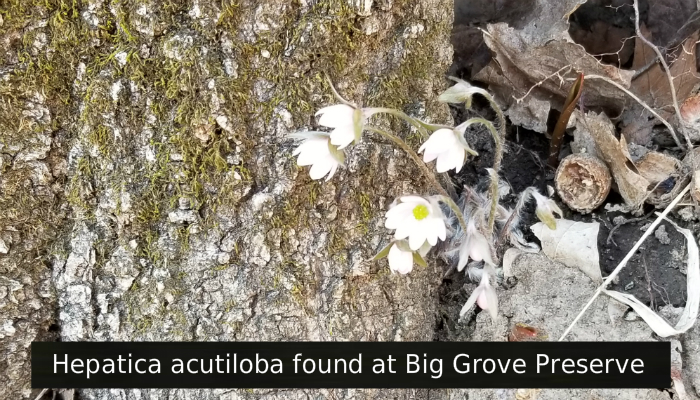I Know it’s Spring Because…

Here’s another journal entry from Sibylla Brown – detailing her Timberhill Oak Savannah spring observations.
I know it’s spring because the Nodding Trout Lily is in bloom, the Red-winged Blackbirds are nesting in the cattails at pond’s edge, male American Goldfinch wings are turning bright yellow breeding color, Wood Ducks are swimming in the pond and the calendar says so. I know it’s spring until I look out my window and see that it’s snowing.
So far this month we’ve had unseasonably cold weather. Temperatures the first week of April were 20-30 degrees below normal. On Monday, April 2 the morning low was 13’ F., on Wednesday, April 4 it was 14’ F. (Average low temperatures for those dates in Decatur County are 37-38’ F.) So I was completely taken by surprise April 6 to see three large clumps of Anemone cup, Dumontinia tuberosa also known as Sclerotinia tuberosa fruiting on a south-facing hillside in the East Savanna.
One expects to find Crimson Cup mushrooms early in the season but finding Anemone cups in such cold weather was a surprise. Widely distributed but not common in eastern North America from New York to North Dakota and south to Tennessee this fungus fruits in early spring, March through May. Ada Hayden Herbarium at Iowa State University lists collections from Winneshiek, Marshall, Boone, Johnson, Iowa, Decatur and Story counties. The underground portion consists of a long, slender stalk attached to a long, irregularly-shaped sclerotium, a compact mass of hardened mushroom tissue. (Sclerotia of specimens I dug up were rooted in frozen soil.) Above ground, the stalk expands into a pale umber-brown cup, 1-3 cm. wide.
Historically Dumontinia tuberosa has been regarded as a parasite of Anemone “but a more complex relationship may exist between the two organisms.” (Elliott et al)
In Europe it is known to parasitize the rhizomes of Anemone nemerosa. Since it is parasitic on European species of Anemone it has always been assumed that must also be the case in North America. But it is uncertain whether it is associated with any American species of Anemone. Mycologist Fred Seaver collected hundreds of specimens and “in no case has the fungus been associated with the rhizomes of any host. While there might be a mycelial connection, none was apparent.” (Seaver) It may also be that the American form of this species differs from the European.
(Note: This species is not edible)
Todd F. Elliott, Steven L. Stephenson. Mushrooms of the Southeast. Portland: Timber Press, 2018: p. 54
Fred J. Seaver. The North American Cup-fungi (Inoperculates). Lancaster: Lancaster Press, 1951:p. 76
Originally published in Southern Iowa Oak Savannah Alliance blog by Sibylla Brown.


